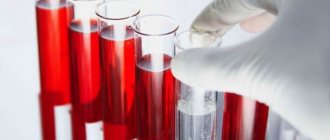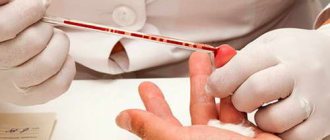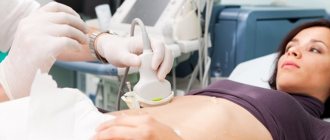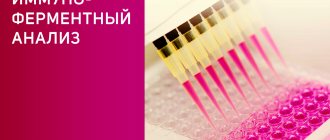With a healthy intestine, the stool is formed, soft and easy to pass. Healthy brown stool of any shade means there are no problems with diet or digestion. But you should be a little alarmed if the feces change color, for example to orange. Orange-colored stool may be red, yellow, brown, or green.
Why does stool turn orange?
Orange-colored feces are not always a cause for concern. Stercobilin is a pigment that colors feces, but in addition to it, the color is affected by a person’s diet, individual characteristics and the use of certain medications. Mono-diets with foods that contain beta-carotene are another reason for orange-colored stool. These include carrots with pumpkin, cauliflower, sweet potatoes, sea buckthorn oil and others. Beta-carotene is not completely absorbed in the body, a maximum of 40 percent. This part is converted into vitamin A, and whatever remains is excreted from the body.
In addition to the foods described above, beta-carotenes (coloring pigments) are also found in the following foods: pumpkin, sea buckthorn oil, sweet potatoes, some salads, spinach and various herbs. The dye is not completely digested by the body, about 30%, since it has a fibrous structure. After the pigment has passed through the intestines, it is gradually converted into vitamin A. The amount of dye that the stomach digests directly depends on the amount of gastric juice (bile) in the body. Thus, children absorb beta-carotenes in a smaller amount than adults. The remaining 70% of the pigment is excreted through urine and feces, simultaneously coloring them orange.
An overdose of vitamin A causes a person to have loose, orange-colored stools.
Some multivitamins that contain carotene also contribute to a change in stool color if taken for a long period of time. Patients may notice yellowing of the skin on the palms and feet, and a change in the color of the whites of the eyes. The stool turns orange if the patient takes the drug Rifampin to treat tuberculosis. Drugs such as Nifuroxazide and Furazolidone can also give an orange color to feces.
How to understand whether a change in stool color is a consequence of a change in diet and the use of new medications, or is there another reason? You just need to stop eating foods with unsaturated carbohydrates and suspend the course of treatment with multivitamins or Rifampicin for three days. If the color of the feces remains the same, then we can conclude that the problem lies elsewhere.
Norm and pathology
In normal condition, feces are a small sausage, the size of which can vary from 10 to 20 centimeters. The stool should be uniform brown in color and soft in consistency. There should be no blood or pus in the stool, but mucus in small quantities is considered acceptable. The nature of the feces of different people may differ from normal standards, this is due to a person’s food preferences and depends on the amount of food and water consumed per day.
Deviations from the norm are considered to be the presence of impurities such as blood, pus, and foam in the stool. A sharp change in the color of stool and its consistency may indicate the development of a pathological process in the body.
Stool during intoxication
With an increased content of bile in the body, poisoning may develop. The main signs of intoxication caused by stagnation of bile:
- Vomit.
- Orange diarrhea.
- Yellowing of the whites of the eyes.
- Bitter taste in the mouth.
- Decreased appetite.
- General state of weakness.
Therapy includes:
- To relieve symptoms of intoxication, patients are prescribed adsorbents (Smecta, Activated carbon).
- To restore normal functioning of the gallbladder, the patient needs to take Sorbitol and Choleritin.
- Drotaverine, No-shpa, Papaverine will help reduce painful spasms.
An accurate diagnosis is made after receiving the results of tests of urine, blood, and feces. If the doctor detects a lack of bile, the patient is recommended to take Allohol, Flacumin.
There are several forms of escherichiosis.
| Type of disease | Main symptoms | Treatment |
| Enterotoxigenic type of Escherichia coli | Normal body temperature, diarrhea with odorless orange stool. Goes away quickly, with virtually no treatment | Most often not required |
| Enteroinvasive type of Escherichia coli | A pulling sensation in the lower abdomen, increased body temperature, regular watery stools, muscle pain (krepature) and a constant feeling of weakness | Contact a specialist and follow his further instructions. Usually the doctor does a hormonal culture, thus determining the strain of the pathogen. Probiotics are prescribed - drugs that normalize intestinal microflora |
| Enterohemmarogic type of Escherichia coli | Sharp spasmodic pain in the lower part of the large intestine, diarrhea with orange feces with blood, normal temperature. This is the most dangerous form of E. coli | A gentle diet - slimy soups, porridge with water, stale white bread. Probiotics and enterosorbents can also be prescribed as medications. |
Associated symptoms
Orange stool in an adult does not occur on its own; it is accompanied by various symptoms. Depending on the area of damage, the following manifestations occur:
- temperature increase;
- painful sensations in the abdomen. Depending on their location, they signal a specific disease. Pain in the epigastrium indicates an inflammatory process in the pancreas, and discomfort in the hypochondrium on the right is characteristic of problems with the liver or gall bladder;
- nausea with vomiting;
- bloating;
- yellow tint of the skin;
- dark urine due to increased levels of stercobilin;
- lack of appetite.
The presence of the disease is indicated by the presence of several symptoms at once, as well as orange stool.
Orange-colored stool due to problems with the stomach or intestines
As mentioned above, the stool is colored by gastric juice (bile). If the stomach and intestines function without deviations, then bile will color the feces in a “standard” brown shade. If a lack of gastric juice has formed in the intestines, this means that the body does not produce a special bile pigment and the production of enzymes is disrupted. Diseases with similar symptoms: hepatitis, liver cirrhosis. An insufficient amount of bilirubin in the body may be a consequence of the appearance of stones in the liver, cholecystitis, or a malignant or benign tumor.
If the reason for the appearance of orange stool is due to the above reasons, then other signs will also appear:
- pain under the ribs;
- digestive problems;
- unusual, pungent odor from the mouth.
Only a specialist can understand the cause of such symptoms. He should also prescribe you several examinations that will accurately confirm the result. You should not assume that the appearance of orange stool is a completely harmless phenomenon. It's better to play it safe and go to the doctor.
Decoding the analysis in adults
Stool analysis helps determine the presence or absence of problems in the gastrointestinal tract. And with a chemical analysis, the presence of salts and protein is determined, acidity, mucus and some other indicators necessary to determine an accurate diagnosis are established.
- Soluble protein. The presence of this substance in the feces indicates that a malfunction has begun in the digestive system, since normally there should be no protein in the feces.
- Starch. This substance, present in feces, indicates a deviation from the norm, since starch must be completely broken down during the digestion of food.
- Muscle fibers. In a completely healthy person, fibers are present in the feces in a modified form, but if they are in an unchanged form, then this indicates a malfunction of the pancreas.
- Leukocytes. In a normal state, a person should not have white blood cells. Their detection and increased number indicate that the patient is developing pathologies of the gastrointestinal tract.
- Connective tissue fibers. This component is the remains of food of animal origin found in feces during defecation. The presence of such fibers indicates that the patient has low acidity, gastritis or pancreatitis.
What else can cause stool to change color to orange?
The following are diseases that rarely cause orange-colored feces, but this can also happen:
| Type of disease | Main symptoms | Treatment |
| Gilbert's syndrome | A disease that is inherited. It is characterized by the fact that bile pigment accumulates in the blood and then directly enters the intestinal lumen. The consequence of this syndrome may be jaundice, and, accordingly, an orange or yellowish coloration of the stool | Eating foods with sufficient fat content. Avoid alcoholic beverages and avoid stressful situations. Phenobarbital is a suitable medication |
| Celiac disease | A disease characterized by physical intolerance to the protein found in wheat, rye and barley. The disease will manifest itself only when the above-described products begin to be included in the diet. After eating them, inflammation of the stomach occurs, which is why the color of the feces changes. | A lifelong gluten-free diet is required. If this does not help, prednisolone is prescribed. If all the above measures are ineffective - hormonal therapy |
Possible diseases
If it was found that the orange tint to the feces is given by not eating food the day before and not taking medications, possible causes may be hepatitis and other ailments associated with the liver, problems with the bile ducts, as well as stones in them.
The list of possible diseases also includes cystitis, disorders in the urinary system, hormonal imbalance, ulcers with gastritis, colitis and lung diseases.
The most common ailments are the following:
The peculiarity of the first disease is that it can be inherited. The coloring pigment enters directly into the blood vessels, and only then into the intestines. The consequence of this is jaundice, as well as an orange coloration of the stool. To eliminate the disease, it is necessary to eat foods saturated with fats and eliminate bad habits, in particular alcohol. Take care of the nervous system, avoid stress.
How to treat the condition?
Treatment for orange-colored stool begins with nutrition and eliminating foods that are high in beta-carotene, such as carrots or sweet potatoes. Then replace these products with others and observe the effect. Typically, excess beta-carotene has a temporary effect on the intestines and does not require treatment.
If medications may turn stool orange and cause other symptoms. If you are taking a course of antibiotics, make an appointment with your doctor to change your medication. If you do not observe any other symptoms other than a change in color, then wait until the end of the course with the drug to see if the stool returns to a brown color.
Stones and tumors are removed surgically; medications do not eliminate such problems. Everyone, without exception, regardless of the cause of the illness, is prescribed a general strengthening course. There are many reasons why orange stool occurs. Not all cases require medical intervention. But you should not ignore such manifestations if they are accompanied by unpleasant symptoms. They may be manifestations of a serious illness.
Other reasons
Experts do not rule out other reasons for changes in stool color that are indirectly related to digestive disorders. The chair turns orange when:
- Infections and intoxication associated with the rapid growth of pathogens.
- Cystic formations in the kidneys, liver, pancreas.
- Other kidney diseases accompanied by impaired removal of toxins from the body
- Gallbladder diseases.
With these diseases, stool may change in shades: from light milky to brick red. There is also a significant dilution of the stool, and with infections, the stool generally becomes watery and foamy.
Diagnostics
The presence of orange stool is not a sign of an infectious disease unless it is accompanied by other symptoms. Diagnostics is recommended if two or three indicators are present and the color of the biomass changes.
You should not delay going to the doctor, as the cause of the disease can be stones in the gall bladder. Solving the problem requires surgical intervention.
Diagnosis of any disease begins with the donation of urine and blood. This is necessary to determine the level:
- leukocytes and ESR - an increase in the level of these indicators indicates the presence of an inflammatory process in the body;
- hepatic transaminase - an increase in this indicator indicates disturbances in the functioning of the pancreas and liver;
- bilirubin - an increase in the content of this direct component indicates a disruption in the activity of the bile duct. The presence of indirect bilirubin is typical for people with blood pathologies and problems with liver activity;
- amylazine with lipases and trypsins - an increase in these enzymes is a sign of acute pancreatitis;
- total protein - a decrease in its norm in the blood indicates an inflammatory process in the pancreas.
A method called coprogram will help you find out why your stool is orange. This advanced stool analysis helps put the whole picture together and make the correct diagnosis.
The use of ultrasound examination of the gastrointestinal tract is also practiced.
If Gilbert's disease or celiac disease is suspected, additional instrumental diagnostics are performed.









